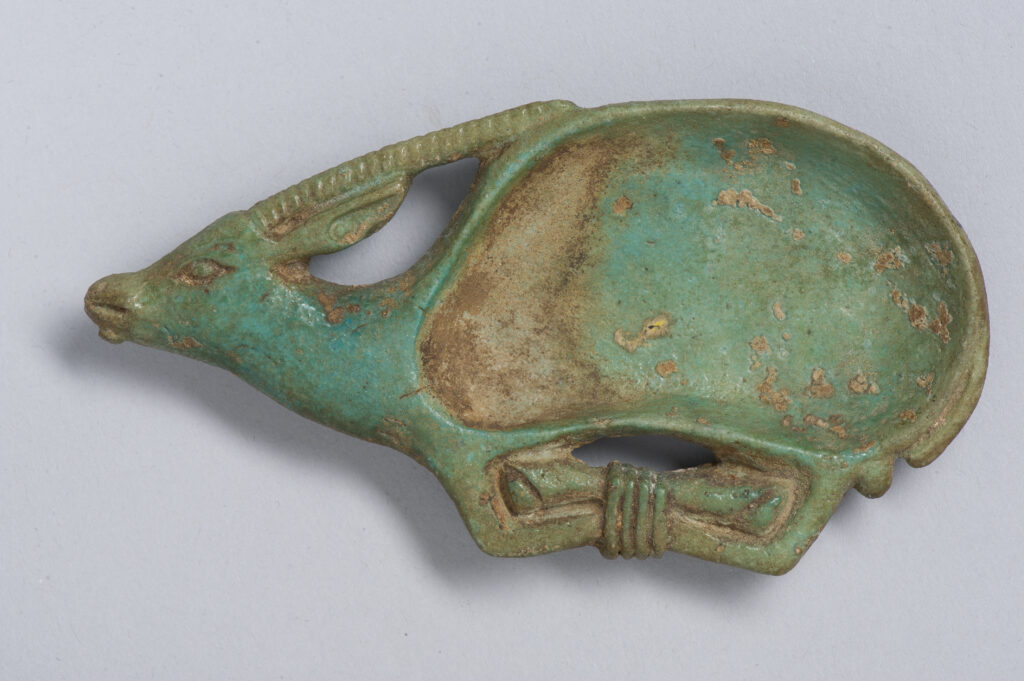As far as entertainment is concerned, the extended lockdown probably means that we are in a state of some boredom which means a lot of Netflix and browsing of the internet. But there is a way to get a little culture and education while we are confined to our homes. “Staying in can be just as entertaining and productive as going out”, I remember the Senior Custodian saying in our team-meeting in the middle of March. When we were asked to contribute to the virtual promotion of the museums and galleries, I found it both exciting and quite challenging to create something which is attractive to both children and adults.
Thus, by reading this blog post you will have the chance to travel for a couple of minutes to the Museum of Antiquities, and get a glimpse of one of ancient Greece’s enduring myths, since the exhibit I will focus on today is a late 6th century attic black-figure amphora.

Many of you may wonder why I am interested in an old amphora, or indeed what could be of interest to you. To be honest, it was difficult to decide which object would be most appealing to you as every one of us has different tastes and interests. However, I chose to present this particular object, one of my favourites in the Museum of Antiquities, because it represents a characteristic scene of Dionysus and Ariadne, and reveals a myth which I believe you will find fascinating.
First of all, let me explain what an amphora is and what it was used for. An amphora was a type of container, predominantly ceramic, with a specific shape and size designed for the transport and storage of various products, both liquid and dry, but mostly for wine. As you will notice, the figures and the ornaments are black on a red background, which was one of the styles of painting in ancient Greece. The main figures are Dionysus, the god of wine, fertility, ritual madness, religious ecstasy, and theatre; and Ariadne, a Cretan princess and his wife. Dionysus holds a drinking horn, wears a long robe (chiton) and a cloak (himation), and is crowned with a wreath of ivy-leaves. Ariadne also wears a robe and a cloak, and a tiara around her head. They are surrounded by ivy branches and vines laden with leaves, clusters of grapes and two enormous flanked eyes. The drinking horn, the ivy branches and the vines are some of Dionysus’ characteristic attributes, while the flanked eyes constitute a common motif in the attic black-figure production and they are known for their apotropaic power to avert evil influences or bad luck. It is evident that the additional ornamental elements and the elaborately presented figures demonstrate the artistic talent of the artist.
The theme chosen for this amphora was very common during the archaic period (6th century B.C.), whether it be in vase paintings, sarcophagus reliefs, or mosaics. The myth of Dionysus and Ariadne exists in various different versions ancient Greek myths were orally transmitted. Some of these versions will be cited briefly in this blog post and I hope that you will find them as enchanting as I do.
Our first stop is Crete, where Minos was the king of the island and commissioned the famous craftsman Daedalus to construct the labyrinth. Ariadne was Minos’ daughter and in charge of the labyrinth, where the Minotaur, a hybrid of man and bull, dwelled. Depending on which version you read, every seven or nine years young Athenians were sacrificed by the Minotaur as part of reparations either to Poseidon or Athena. One year, Theseus, the son of the Athenian king Aegeus, volunteered to join the sacrifice in order to kill the Minotaur and relieve Athens from this terrible tribute. When he arrived on the island, Ariadne fell in love with him at first sight and decided to help him to kill the Minotaur and escape from the labyrinth. She asked him to return the favour by taking her with him and marrying her.
Ariadne betrayed her father and her people for her lover, Theseus. They both fled secretly from Crete and arrived on another island, Naxos. There, Dionysus saw Ariadne and he became enamoured of her. While Theseus was sleeping, Athena appeared to him in a dream, and ordered him to leave Ariadne and return to Athens, which he did. According to another version, however, Dionysus presented himself to Theseus to announce that he had chosen Ariadne as his wife, and warned the young hero that he would face many woes if he did not yield her. Theseus obeyed the divine will and abandoned Ariadne. In a third version, Dionysus stole Ariadne without notice and wedded her.
As you will discern on our amphora, we have the end of the best-known version of the myth. Ariadne became Dionysus’ wife, gave birth to his children and ascended to Olympus with her husband as an immortal. However, various accounts of her fate exist. In another version, Ariadne hanged herself because she was miserable away from Theseus and in another, Artemis put her to death at the prompting of Dionysus in order to relieve her pain. Generally, in Greek vase painting Ariadne is often depicted alongside Dionysus, either feasting with the Olympian gods or, as in our case, celebrating amid Bacchic scenery.

Therefore, this black-figure amphora constitutes one of my favourite objects of the Museum of Antiquities because it always reminds me of the adventurous story of Dionysus and Ariadne, a story of unfulfilled love, treachery, abduction, marriage and death. Theseus was willing to sacrifice everything in order to save Athens. He chose to confront the Minotaur in the labyrinth putting his life in danger. But his love for his people surpassed his own will. Nevertheless, his plan was changed when he was asked to abandon Ariadne, a divine order which was impossible to ignore. Such a modest wine-jug carries a story of universal renown. This myth was not just chosen as subject matter during the classical period, but it has also influenced many modern painters, sculptors, composers and poets whose masterpieces adorn museums and galleries all over the world.
By Chryssa Siakka, Gallery Steward
We’re releasing this post as part of an Antiquities double-bill, where two our Sunday team have explored the ancient world through selected items in the Museum of Antiquities, above, and in the temporary exhibition Ancient Beings. See the sister post here: https://etoncollegecollections.wordpress.com/2020/07/14/feeding-the-oryxes/



